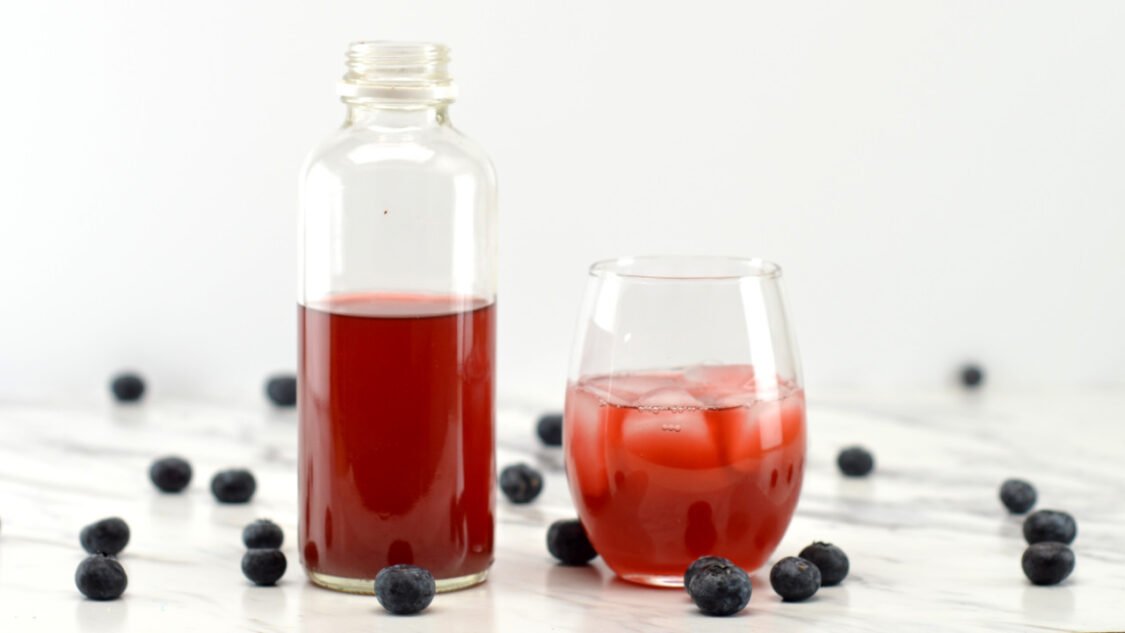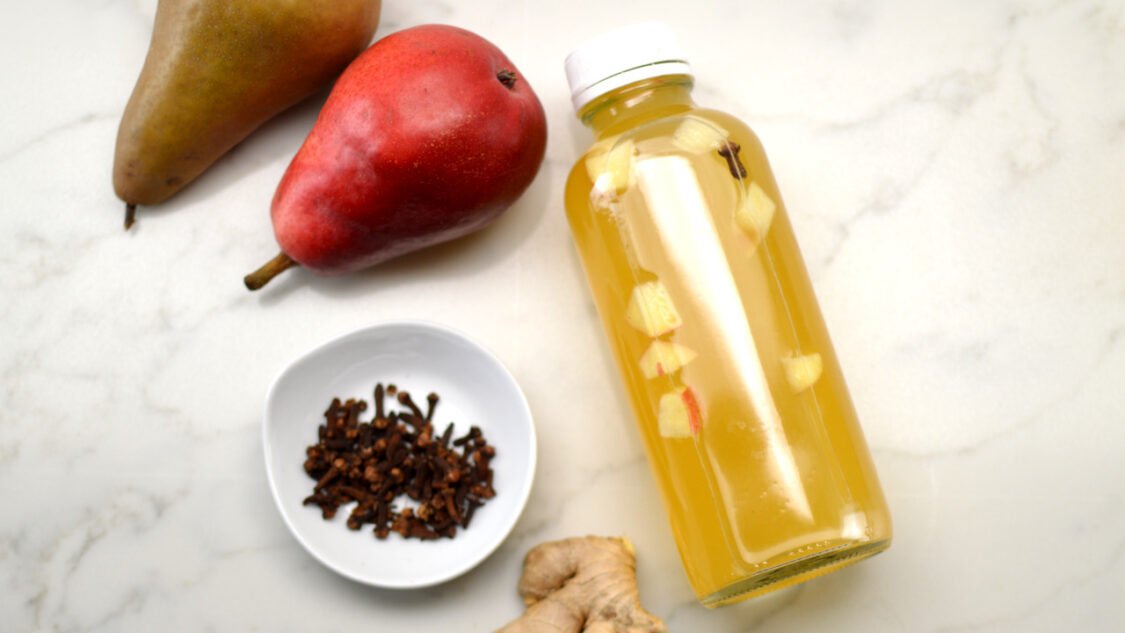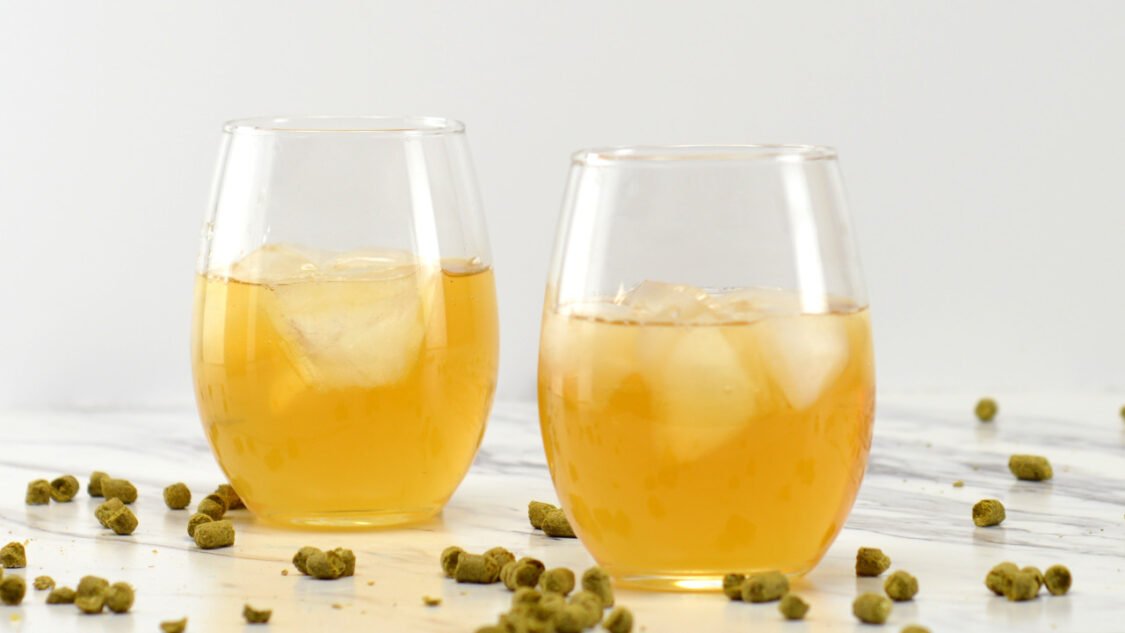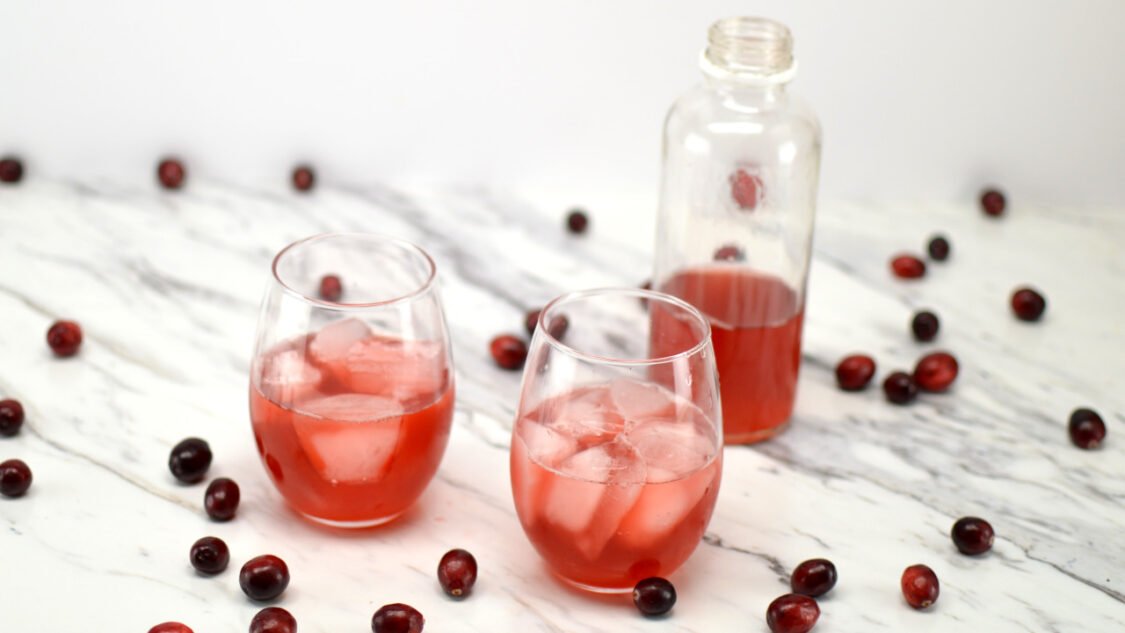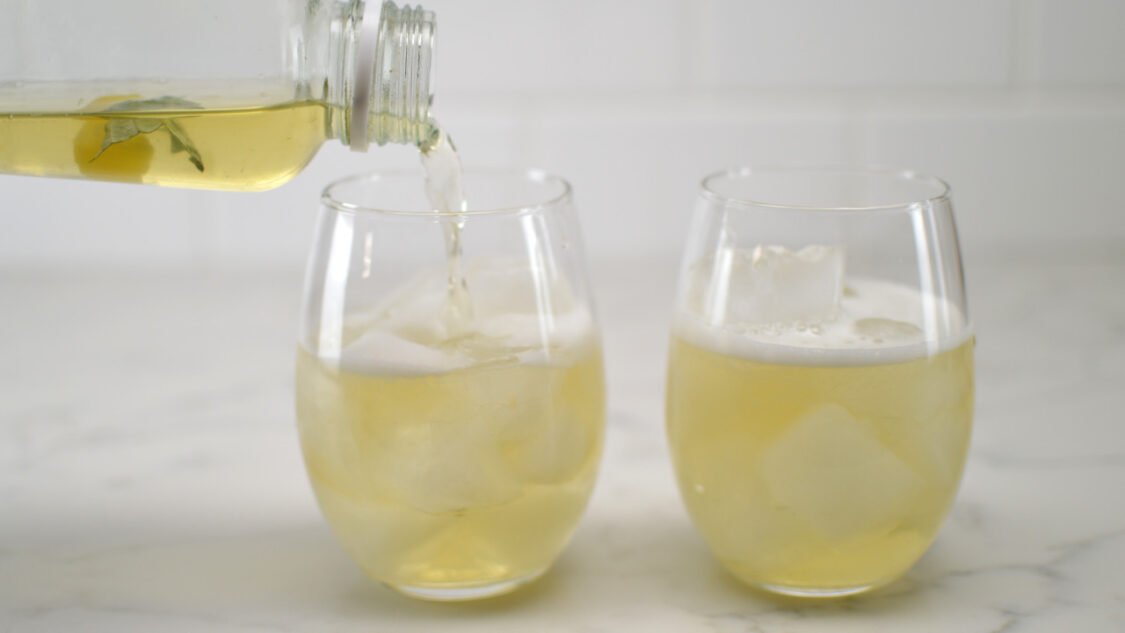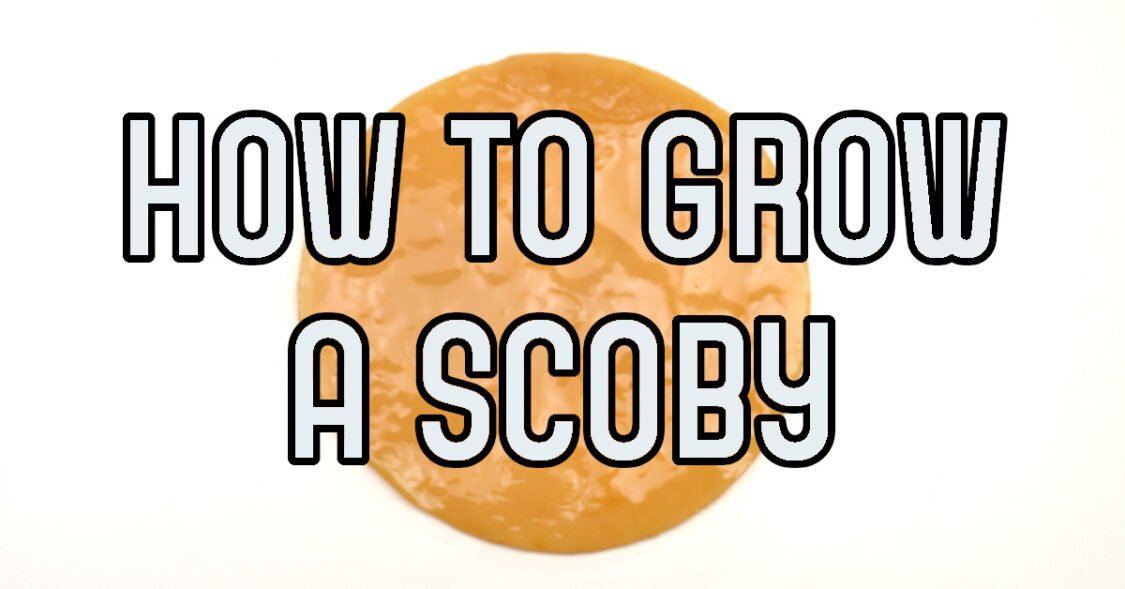Orange Lime Kombucha
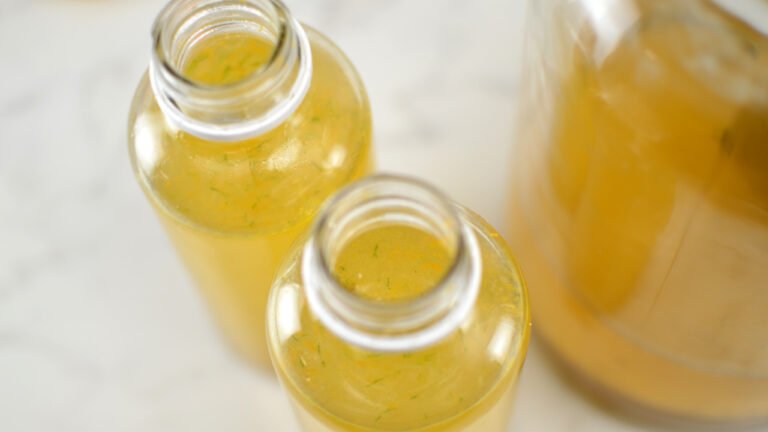
This Orange Lime Kombucha is made with green tea, fresh orange juice, fresh lime juice, and a generous amount of orange and lime zest. I like to use green tea kombucha as the base for this recipe since it has a lighter, more subtle taste and lets the fresh citrus flavors take the spotlight.
The addition of fresh juice and zest gives this kombucha a burst of citrus aroma and flavor that will excite and delight your taste buds. The combination of the zests with the fresh juices and green tea creates a complex and satisfying taste that is sweet tangy and juicy.
This kombucha is the perfect base for making citrusy-forward kombucha mocktails like my Orange Lime Kombucha Margarita Mocktail!
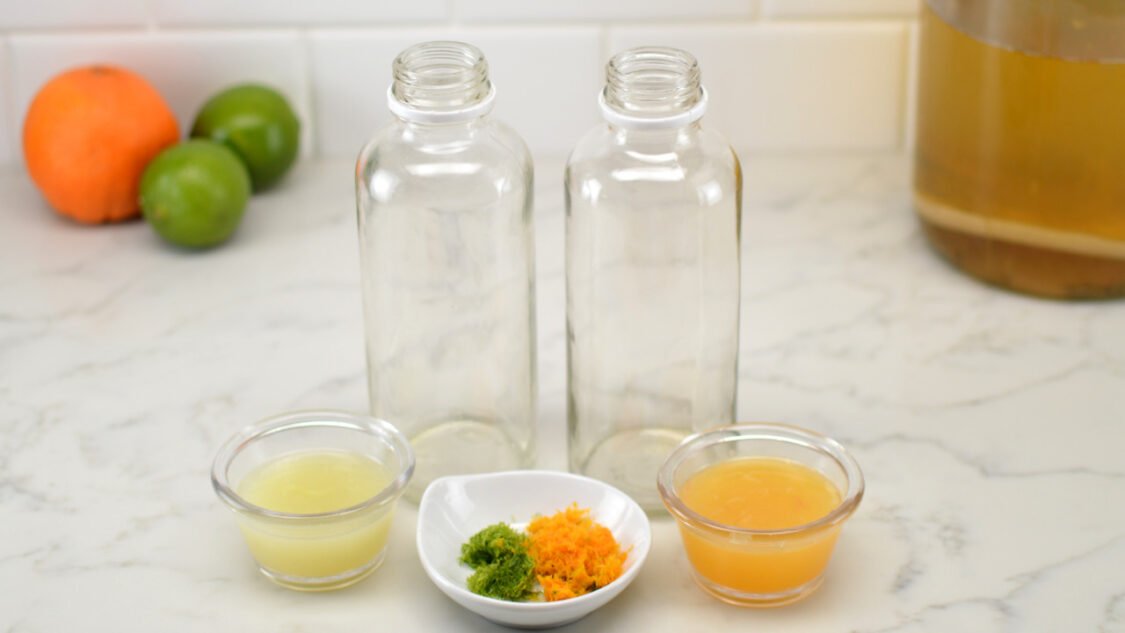
Kombucha Fermentation Overview
There are two fermentation phases when making kombucha:
Primary Fermentation: This is when you transform sweet tea into tart and tasty kombucha. Get all the details at my article on how to make kombucha.
Secondary Fermentation: This is when you carbonate your homemade kombucha by adding flavors (like fresh citrus juices and zest) and sugar and bottling it.

Preparing for Secondary Fermentation
This recipe makes about 7 x 16 fluid ounce bottles of finished kombucha (from a 1-gallon batch of unflavored homemade kombucha aka from your primary fermentation).
Reserve 2 cups (about 16 oz / 0.47L) kombucha and your SCOBY from your completed primary fermentation and set aside – you will use this as your starter for your next gallon batch of kombucha.
With your kombucha starter tea and SCOBY placed aside, you now have enough kombucha left to flavor and fill your bottles. This guide assumes are using 16 oz. glass bottles which are a popular choice for kombucha; however, there are many options for bottling kombucha.
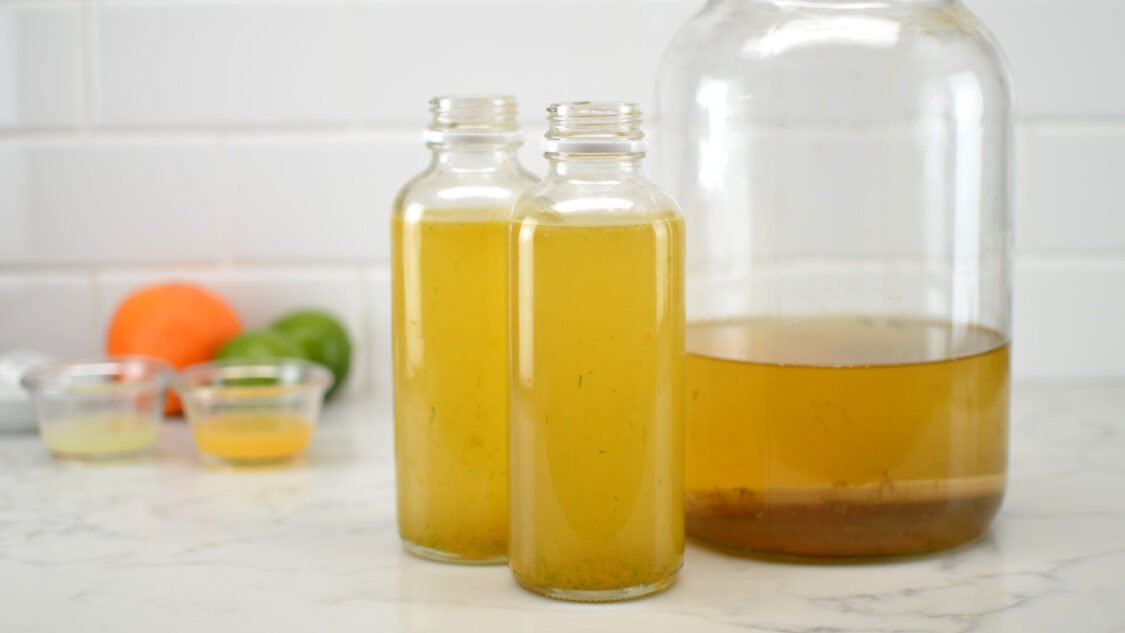
Ingredients to make Orange Lime Kombucha
Kombucha: Finished kombucha from your first fermentation is the base to which you will add the layers of citrus flavors. I like to use green tea kombucha for this recipe; however, black tea will also yield great results.
Orange Juice: Orange juice contributes sweetness, acidity, and a citrusy flavors to the kombucha. The natural sugars in orange juice offset the earthy and tart flavors inherent in kombucha, while the acidity adds a pleasant tanginess to the overall taste.
Lime Juice: Lime juice is tart, acidic, and slightly sweet with bright and fresh flavors that adds a distinctive sour and tangy notes to the kombucha.
Fresh orange and lime zests: Citrus zest is the outermost layer of the citrus fruit peel, which is rich in flavorful oils and aroma compounds. Orange adds a bright, citrusy flavor to the kombucha while the lime zest adds some slight bitterness. The zest should be removed carefully with a fine grater or zester, taking care not to include the bitter white pith that lies just beneath the outer layer.
Sugar: A touch of additional sugar for bacteria and yeast to feed on which creates carbonation–extra fizzy goodness. When filling 16 ounce bottles I’ve found a sugar cube has the right amount of sugar (1 tsp) for carbonation and is a convenient way to add the right amount without the mess.
How to make Orange Lime Kombucha
Add Flavors: Divide orange and lime juice and zest between bottles
Bottle: Transfer kombucha to fermentation bottles.
Condition: For 3 to 10 days, until it reaches the carbonation level you like.
Enjoy: Chill in the fridge before serving

Orange Lime Kombucha Recipe
Yield: 7 bottles • Active time: 20 minutes • Total time: 3 -10 days
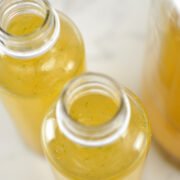
This recipe assumes you are doing a secondary fermentation (flavoring and carbonation) in the bottle. You may also incorporate a third fermentation using the same proportions but following the third fermentation steps.
Ingredients:
1 gallon homemade kombucha from a first fermentation, 3.7 L – green tea preferred
1/2 cup of orange juice, freshly squeezed (typically two oranges)
1/2 cup of lime juice, freshly squeezed (about 2-3 limes)
4 tablespoons orange zest
4 tablespoons lime zest
7 sugar cubes or 2 Tbs white sugar 12 g
Instructions:
Prepare Fruit – zest the oranges and limes. Mix zest in a small bowl set aside. Juice oranges and limes into the bowl with zest and stir to combine.
Flavor: Evenly divide zest and juice mixture between bottles (Approximately 1 tbs bottle)
Sweeten: Add one tsp sugar or one sugar cube to each 16 0z bottle
Bottle: Transfer kombucha into fermentation bottles, leaving about 1 inch empty at the top. Seal tightly.
Ferment: Place in a dark, room temperature area for 3 to 10 days, until it reaches the carbonation level you like. This process will go faster in warmer climates, and slower in cooler climates.
Enjoy: Chill your Orange Lime Kombucha bottles in the refrigerator before serving and strain the kombucha to remove zest when serving (optional).
Homemade kombucha can be stored in the fridge, tightly sealed, for several weeks
Tips & Tricks:
Make sweet tea for your next batch the night before you flavor and bottling and let it cool on the stove overnight so that you can flavor your kombucha and get your next batch started at the same time.
If this is your first time brewing, it may be helpful to use a plastic water bottle as a gauge. Fill a recyclable plastic bottle with kombucha (leaving 1.5 inches empty at the top). When this bottle becomes rock hard, you’ll know the glass bottles are also ready. This will help you gauge how long it take for kombucha to carbonate your climate and will prevent bottle explosions.
Nutrition Information:
Kombucha Recipes You Might Also Like
Helping you learn to brew kombucha, find inspiration for new kombucha flavors and use kombucha to make kombucha mocktails

